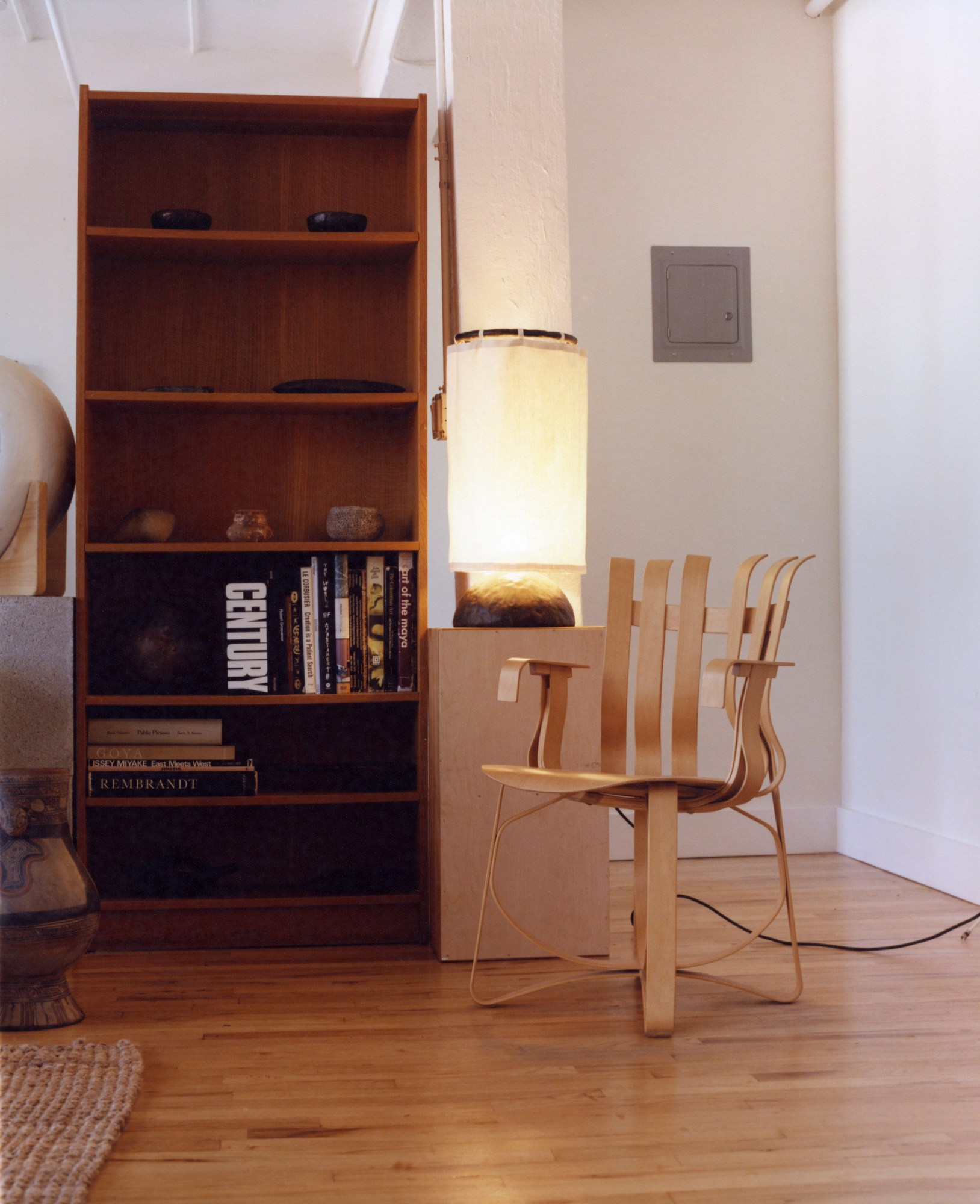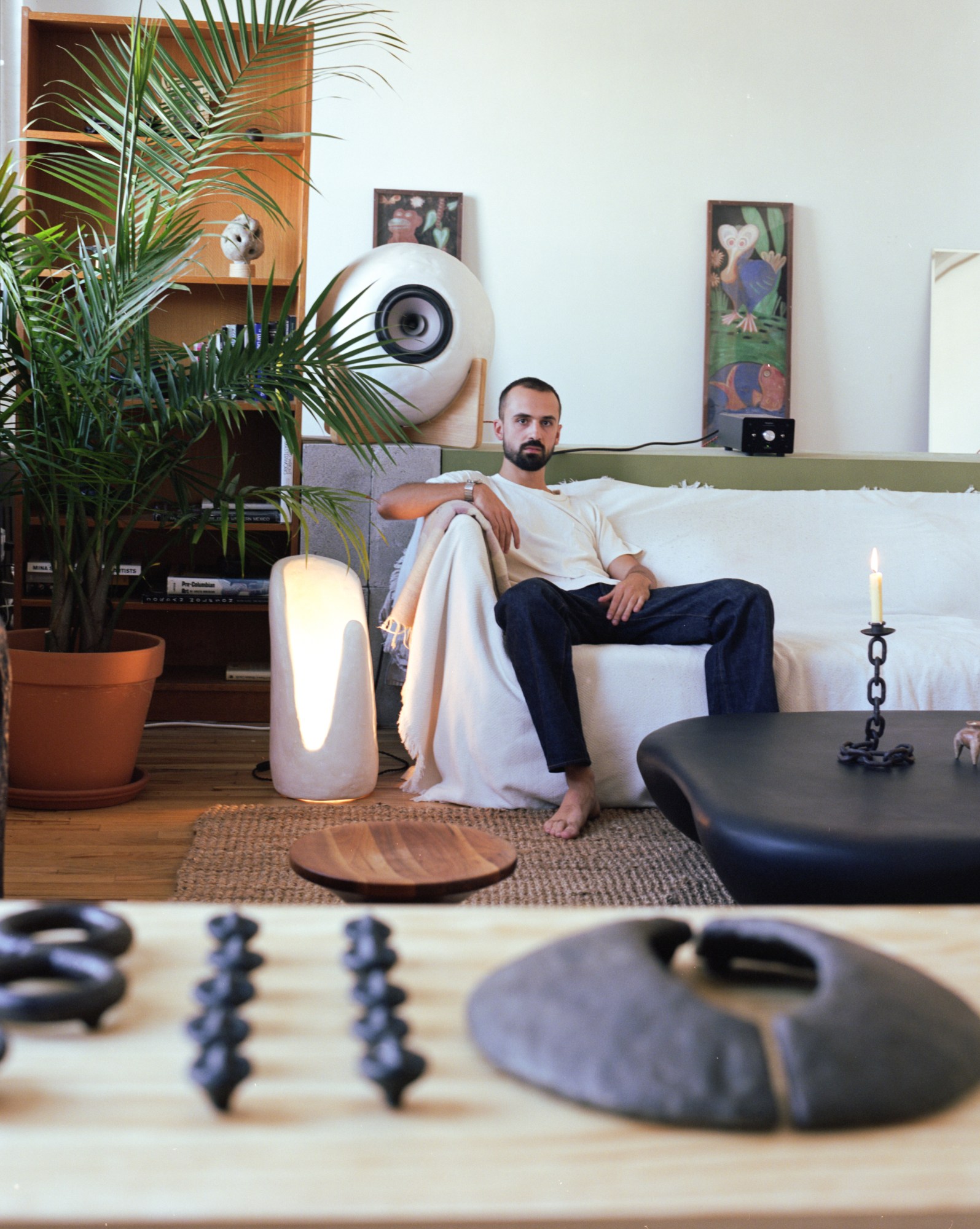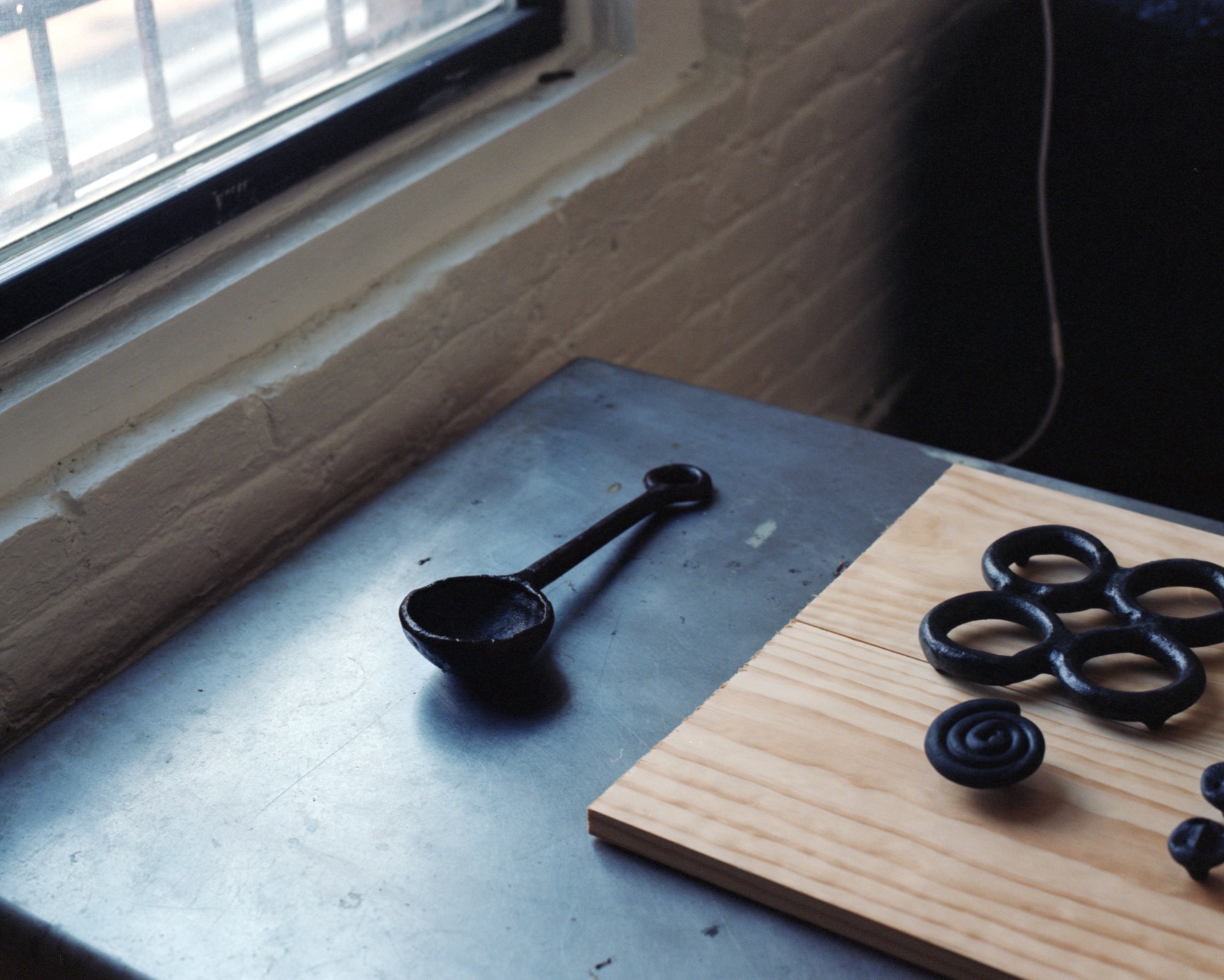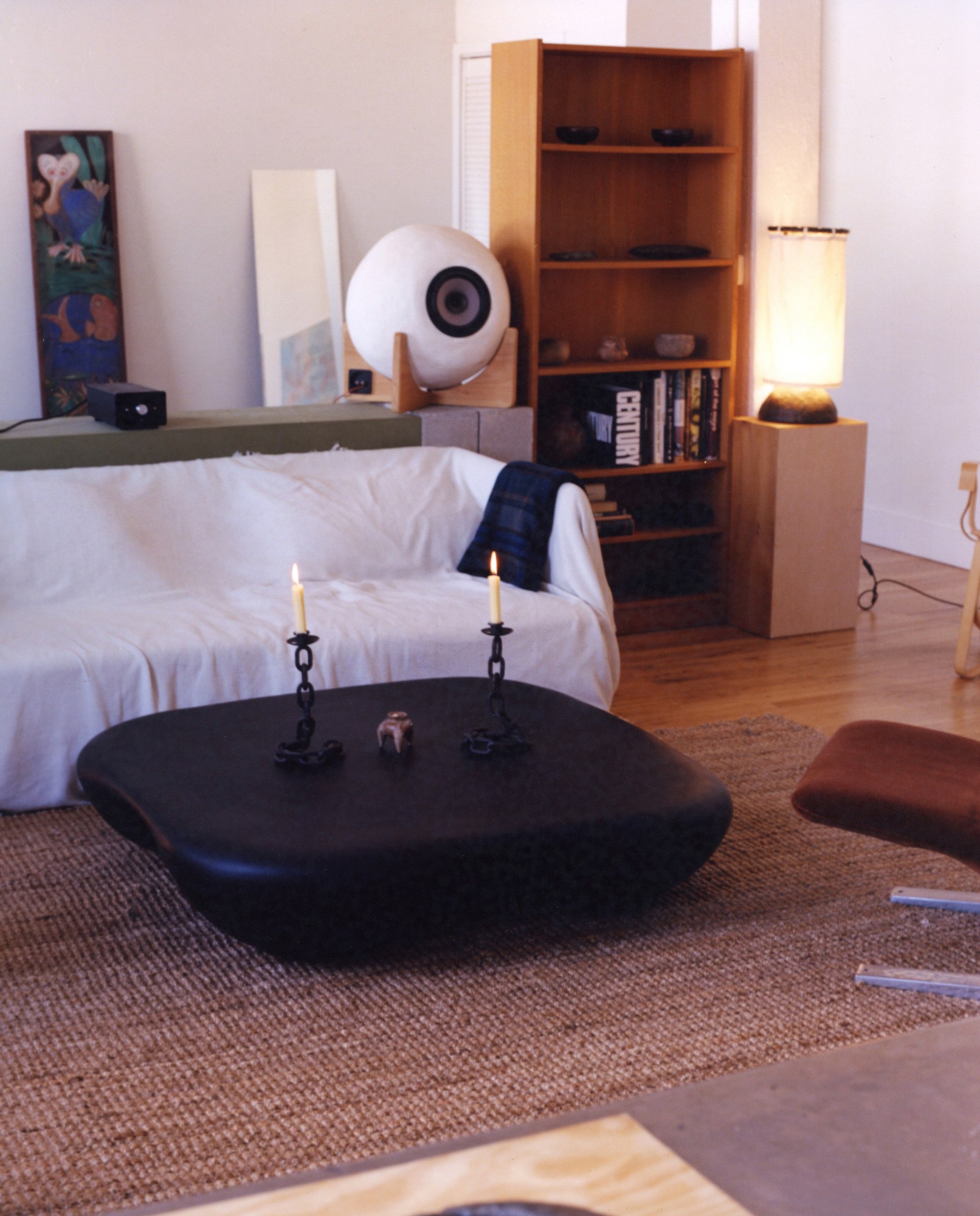Inside Mike Ruiz Serra’s Brooklyn apartment, a painted clay vessel sits in the corner on the floor by a bookshelf. The 26-year-old designer lifts it to reveal the patterns that wrap around the vase — a pre-Columbian artefact studied by his great-grandfather’s brother, who was an archaeologist in Puerto Rico. “Most of them are not in the family anymore, we just have the non-significant ones,” he tells me. The vessel is one of the many ancient pieces his paternal ancestor examined, and one of the few that was passed down through enough generations to land in Mike’s living room. “I grew up around this very particular art. My grandparent’s house was filled with these beautiful pieces,” he says. “It’s relevant in my own work because, for a long time, it was my only frame of reference.”
Mike’s current designs — such as his circular wall sconces, plaster-made lamps and curved coffee tables — are certainly a product of his heritage story and early influences. He draws upon the themes of family heirlooms, traditional craft and centuries-old antiques to create one-of-a-kind furniture and objects. Just last year, he created a collection of cast iron cookware — handmade pots and pans — in collaboration with Flynn McGarry, the owner of New York restaurant and wine bar, Gem. “I love this idea of making something that could last forever,” he says. “I’ve had to come to terms with the fact that a lot of my work won’t last forever, because that’s part of the experimental nature of it. Now I’m like, okay how can I work with more traditional materials.” Equally unique but more modern than his cast-iron collection is Mike’s best-selling piece, the Quad Table. A square surface supported by four semicircles, the table is cast from stone composite and brought to life by a rotating mold. It’s a highly-coveted centrepiece that can be found on 1stDibs and Sight Unseen for thousands, but for Mike, it was just an idea that happened to work.

“It started with the speaker,” Mike tells me, motioning to an all-black, Flintstones-like, amorphous structure standing on four legs. “Those are speakers from a car sound system I found in a parts shop by a junkyard. I liked throwing parties then and wanted to build a really loud sound system.” The designer made this piece in 2019, while an industrial design student at the Rhode Island School of Design (and, as he reluctantly admits, during a period when he was into cars). The speaker is another callback to his Puerto Rican background. “That’s what it’s rooted in,” he explains. “Half of my family is Puerto Rican, and the sound system is part of that culture.” He crafted the speaker from recycled paper pulp and painted it with a shellac-based finish, and considers it to be a precursor to the Quad Table. “I made the first prototypes of the speaker and the table at the same time. That wasn’t that long ago,” he tells me. “The next thing I knew, people were hitting me up. I was able to get the idea into the right places.”
Over the next four years, Mike’s work picked up traction on Instagram. “I came up in a weird moment during the pandemic where a gallery was just a glorified Instagram page,” he says. “It was kind of this unique moment where a lot of the institutional design world lost a lot of its power. So I was able to slip through the cracks.” By that, Mike means his DMs were popping and he was able to remain unrepresented by a gallery. He made sales to friends and influential clients, and even fielded press inquiries on the app. Fast-forward to 2022, and one DM exchange led to a very significant placement: Solange Knowles graced the cover of Apartamento magazine’s 30th issue alongside her very own Quad Table. By then, Mike had made a name for himself as a designer with a signature, highly-photogenic piece (it was also featured in The New York Times in 2020 and Architectural Digest in 2022).

The intersection of fashion and design worlds, particularly on Instagram, further amplified Mike’s reach. The artist’s e-commerce presence on both home and fashion retailers reveals how his work speaks to design heads and style connoisseurs alike, and many of his customers stumbled upon his pieces while tapping through Stories. The virality of his work is also a testament to how the visual worlds converge on the app, and how quickly awareness spreads when multiple audiences are watching. “It was all very organic and very word of mouth. That’s how it’s been for me,” he reflects. “It was weird being so young and having this design take off. I had no experience producing something at a high volume. So, my life was a complete mess for a few years.”
While it may have been an uncertain period — after all, finding one’s footing as a recently-graduated designer in the middle of a global pandemic isn’t exactly a sure thing — Mike landed on his feet. “I’m doing everything I want right now. I wouldn’t change anything,” he says. He is currently splitting his time between his Brooklyn apartment and his parents’ place in Connecticut, where he does the bulk of his product prototyping. “It would have been really difficult if I moved here from somewhere else,” he acknowledges. “Having family close by made it possible. For the majority of my career here, I’ve been working at my parents house and not having to pay rent.” Once his business picked up, Mike got an apartment of his own in New York, which is important for running deliveries, collaborating with friends and businesses, and working with fabricators. Now, he’s focused on continuing to create new work and expand his business. “It’s all I’ve really known at this point. I’m one of those weird cases,” he says of working for himself. “But I’ve discovered that if I’m making things that I like, then other people like it, too.”

Returning to his original appreciation for collectible objects, Mike’s next chapter involves a new experiment: launching his own company, Serra Hardware. “It’s very different from the other things I’ve done,” he says of his new venture. Offering a collection of 12 to 15 cast-iron designs, including lights, doorknobs, handles and objects launching next spring, Serra Hardware is an opportunity for the designer to create pieces that are special yet accessible. “All of the work I’ve done up until this point is very inaccessible and expensive,” he says. “Now that I’m growing out of being a made-to-order artist, I want to be able to make things at scale that more people can enjoy.” As for the material, Mike feels that cast-iron speaks for itself as a timeless choice. “I’ve felt that iron is a really classic American material that a lot of this country was built on,” he says. “The iron industry has been decaying for years; yet, there are a lot of cool foundries making this stuff.”
Sitting in his apartment, a space that is sparsely decorated with his own work and a few of his family’s original artefacts excavated from Puerto Rico, Mike points out a few smaller vessels sitting on his bookshelf. “I had no context around what these things even were,” he says of growing up around these artefacts. “Once I started studying and understanding the pieces, they felt more significant. But still, without knowing much as a kid, I was very vocal about how much I liked art.” As a final question, I asked Mike if he ever thinks about what the kid-version of him would say about what he’s doing now. “All the time,” he says. “This is exactly what I wanted to be doing. It’s getting harder and harder, but I’d like to think it’s possible.”

Credits
Photography Raphael Gaultier


